Kitchen Guides
How to Find the Perfect Stainless Sink for Your Kitchen
Everything you need to know about choosing the right hard-working sink
Stainless steel scores plenty of brownie points for being an exceptional material for kitchen sinks. There are many different sink styles and materials available today and stainless steel is by far the most popular and common. If stainless steel is your material of choice for your new kitchen sink, then there are a few things you will need to consider that will help to narrow down your choices in shape, size and style.
The gauge of stainless steel refers to its thickness on a scale of eight to 30 – the lower the number, the thicker the stainless steel.
The most common gauge for good quality kitchen sinks is from 16 to 18. Heavier gauge stainless steel contributes to noise reduction when items come into contact with the sink and also make it more resistant to denting and bowing.
Browse through images of stainless steel sinks
The most common gauge for good quality kitchen sinks is from 16 to 18. Heavier gauge stainless steel contributes to noise reduction when items come into contact with the sink and also make it more resistant to denting and bowing.
Browse through images of stainless steel sinks
Why choose stainless steel?
Stainless steel is the most common choice for kitchen sinks and with good reason. It’s a very durable material, which is easy to clean and requires very little upkeep.
Stainless steel also resists corrosion, won’t chip, crack or wear out and is also non-porous, making it very hygienic. A good quality stainless steel sink should last forever!
Stainless steel is the most common choice for kitchen sinks and with good reason. It’s a very durable material, which is easy to clean and requires very little upkeep.
Stainless steel also resists corrosion, won’t chip, crack or wear out and is also non-porous, making it very hygienic. A good quality stainless steel sink should last forever!
Type: Top-mount sink
When you are choosing a stainless steel sink for your new kitchen, the two most common installation options that you will be offered are under-mount and top-mount.
A top-mount sink, also referred to as an inset sink, is the more cost-effective option, both in terms of retail cost and the cost associated with installation. The outer rim of the sink sits on top of the bench, such as the one pictured here. These sinks usually have a stainless steel drainer board attached, although you can choose to have one without.
They are installed by cutting a hole in the bench top. The sink’s border rim sits over the bench and is then secured from underneath by clips. The cut-out is completely unexposed making top-mount sinks suitable for use with any bench top material, including laminate.
When you are choosing a stainless steel sink for your new kitchen, the two most common installation options that you will be offered are under-mount and top-mount.
A top-mount sink, also referred to as an inset sink, is the more cost-effective option, both in terms of retail cost and the cost associated with installation. The outer rim of the sink sits on top of the bench, such as the one pictured here. These sinks usually have a stainless steel drainer board attached, although you can choose to have one without.
They are installed by cutting a hole in the bench top. The sink’s border rim sits over the bench and is then secured from underneath by clips. The cut-out is completely unexposed making top-mount sinks suitable for use with any bench top material, including laminate.
Type: Under-mount sink
An under-mount sink is mounted underneath the bench top. In this case, the bench cut-out is completely exposed, making under-mount sinks best suited to solid surface bench tops, such as granite or engineered stone – the cut-out can be polished and sealed against moisture. Proper installation and sealing is crucial to prevent leakage and to make sure the sink is properly supported under the bench top.
Check out these ingenious solutions for kitchen under-sink areas
An under-mount sink is mounted underneath the bench top. In this case, the bench cut-out is completely exposed, making under-mount sinks best suited to solid surface bench tops, such as granite or engineered stone – the cut-out can be polished and sealed against moisture. Proper installation and sealing is crucial to prevent leakage and to make sure the sink is properly supported under the bench top.
Check out these ingenious solutions for kitchen under-sink areas
The main advantage of an under-mount sink is the continuous flow of the bench top surface, making it easy to wipe crumbs and water straight into the sink. If you wish to add a drainer board, you can choose a sink that has one especially made to fit and is often included in the accessory pack of a new sink purchase. Alternatively, you can have drainer grooves cut into the bench top, as pictured here.
All-in-one bench top and sink
If you choose a stainless steel bench top for your new kitchen, you can have it manufactured to include the sink as part of the whole bench top unit. Your bench top manufacturer will be able to offer you various options for sink shape.
The main advantage here is that the sink can be seamlessly incorporated into the bench top so that you won’t have any seals or joins – just a continuous flow of stainless steel the length of the bench top, including the dip of the sink. This option isn’t for everybody but it’s certainly worth exploring if you love the idea of having an easy-to-clean commercial-style kitchen.
If you choose a stainless steel bench top for your new kitchen, you can have it manufactured to include the sink as part of the whole bench top unit. Your bench top manufacturer will be able to offer you various options for sink shape.
The main advantage here is that the sink can be seamlessly incorporated into the bench top so that you won’t have any seals or joins – just a continuous flow of stainless steel the length of the bench top, including the dip of the sink. This option isn’t for everybody but it’s certainly worth exploring if you love the idea of having an easy-to-clean commercial-style kitchen.
How many bowls and what size?
The number of bowls you choose, and the size of each is up to you. It will usually depend on how much washing up you do and what you currently use your kitchen sink for. I would recommend having at least one big bowl that is large enough for your biggest oven trays, roasting dishes and chopping boards to be washed in. It is extremely annoying trying to wash a large tray or dish in a sink that it just doesn’t fit into. Its often handy to have a second bowl, too, but it only needs to be about half-to-three quarters the size of the main bowl. The second sink is generally used to empty pots and pour liquids down the drain while the main sink is in use.
The number of bowls you choose, and the size of each is up to you. It will usually depend on how much washing up you do and what you currently use your kitchen sink for. I would recommend having at least one big bowl that is large enough for your biggest oven trays, roasting dishes and chopping boards to be washed in. It is extremely annoying trying to wash a large tray or dish in a sink that it just doesn’t fit into. Its often handy to have a second bowl, too, but it only needs to be about half-to-three quarters the size of the main bowl. The second sink is generally used to empty pots and pour liquids down the drain while the main sink is in use.
Zero radius
You may hear the term zero radius during your search for the ideal stainless steel kitchen sink. Zero radius refers to the shape of the corners of the sink. As opposed to the more conventional and gently curved corners and sloped sides in most other types, a zero radius sink is completely rectangular with 90-degree corners and completely straight sides.
The simple flat, squared planes of this style of sink are very much in keeping with minimalist contemporary-style kitchen design, however, this look comes with a disadvantage. Zero radius sinks are more difficult to clean due to the tight square corners. You may want to weight up how much you love this look versus how much time and effort you want to put into cleaning your new sink.
You may hear the term zero radius during your search for the ideal stainless steel kitchen sink. Zero radius refers to the shape of the corners of the sink. As opposed to the more conventional and gently curved corners and sloped sides in most other types, a zero radius sink is completely rectangular with 90-degree corners and completely straight sides.
The simple flat, squared planes of this style of sink are very much in keeping with minimalist contemporary-style kitchen design, however, this look comes with a disadvantage. Zero radius sinks are more difficult to clean due to the tight square corners. You may want to weight up how much you love this look versus how much time and effort you want to put into cleaning your new sink.
Accessories
Many sinks now come with accessory packs included, or the option to purchase accessories to suit. These accessories most often include such items as a drainer basket or tray, colander and chopping board.
In the kitchen pictured here, there are two equal size bowls and a draining board that covers one of the bowls. The drainer tray can be easily removed and stored under the sink when not in use.
Read more:
16 Sink Designs for Kitchens of All Kinds
Tell us:
What type of stainless steel sink did you choose for your new kitchen? Tell us about it in the Comments below.
Many sinks now come with accessory packs included, or the option to purchase accessories to suit. These accessories most often include such items as a drainer basket or tray, colander and chopping board.
In the kitchen pictured here, there are two equal size bowls and a draining board that covers one of the bowls. The drainer tray can be easily removed and stored under the sink when not in use.
Read more:
16 Sink Designs for Kitchens of All Kinds
Tell us:
What type of stainless steel sink did you choose for your new kitchen? Tell us about it in the Comments below.



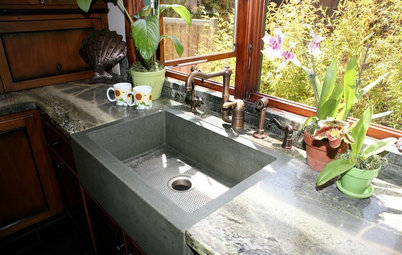
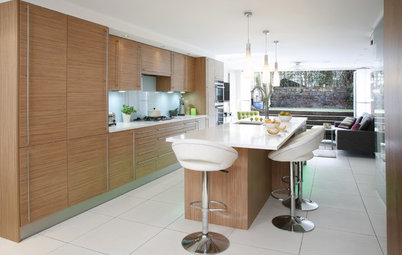
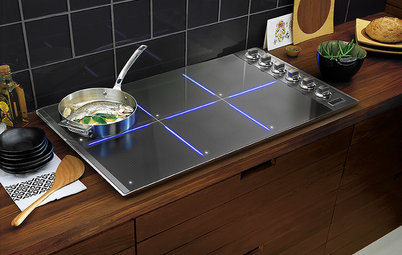
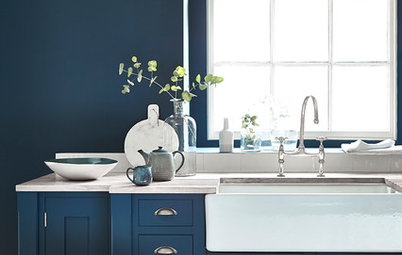
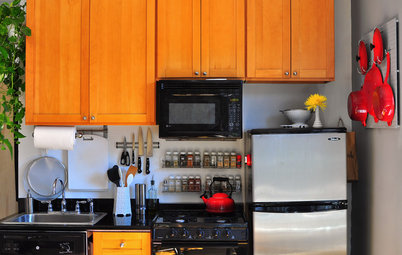

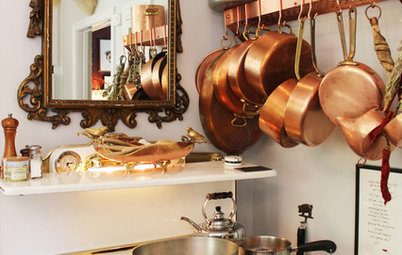
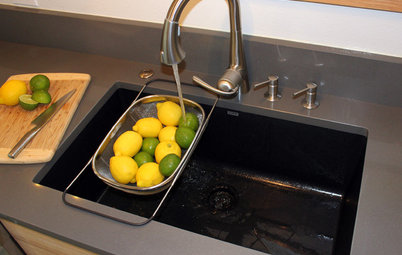
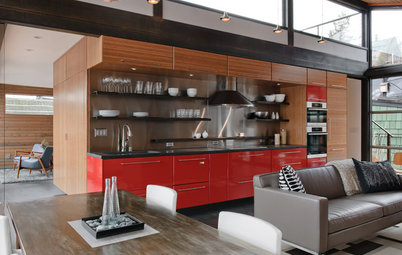
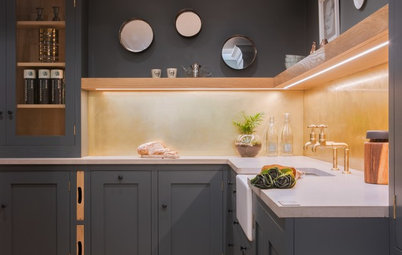

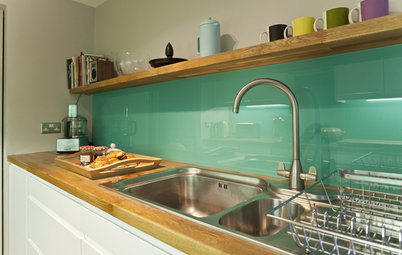
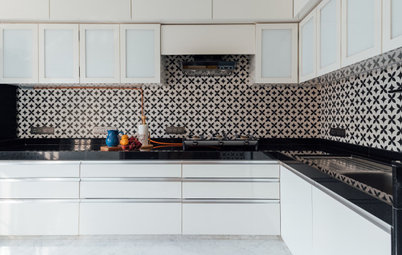
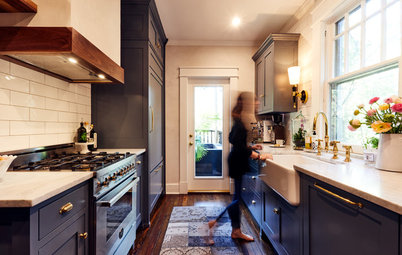
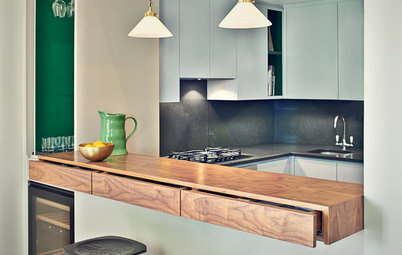
Stainless steel is an alloy (or mix) of steel, chromium and nickel. Two details to look out for when selecting a good quality stainless steel sink are the grade and the gauge of the stainless steel. The higher the percentage of chromium and nickel elements, the better the grade of stainless steel.
A good quality stainless steel sink is made from 18/10 (also known as 304 grade) stainless steel, which means that the stainless steel is made from 18 per cent chromium and 10 per cent nickel. Nickel is what gives stainless steel its strength and the chromium reacts with oxygen to create a chrome oxide film, which makes stainless steel so resistant to corrosion.